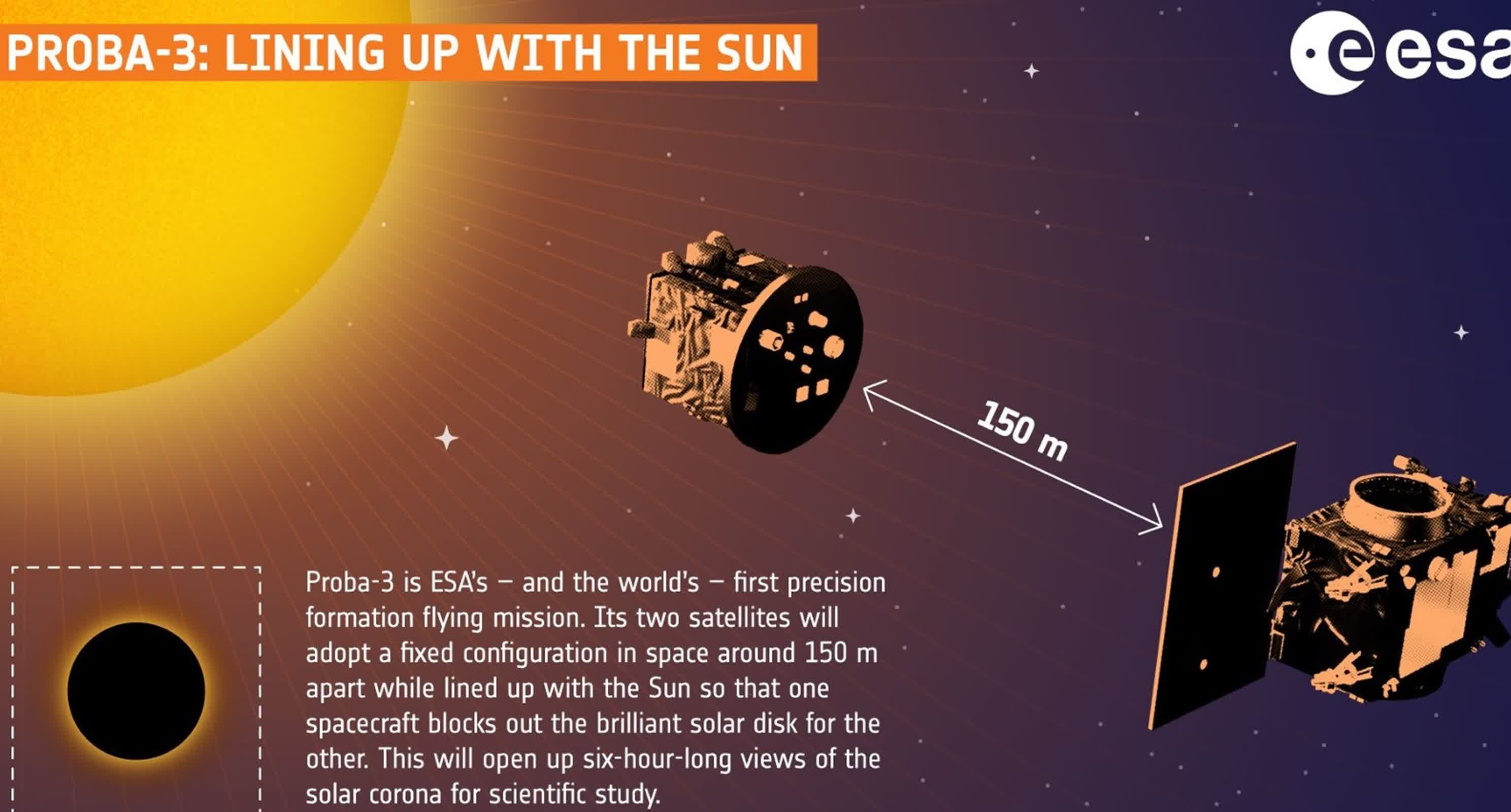Serving tech enthusiasts for over 25 years.
TechSpot means tech analysis and advice you can trust.
Highly anticipated: As the launch date approaches, the scientific community awaits the potential advancements in solar research and space technology that Proba-3 may bring. The mission represents a significant step forward in our ability to study the Sun and its effects on our planet and near-Earth environment.
The European Space Agency (ESA) is set to launch a pioneering mission that will create artificial solar eclipses in space. The Proba-3 mission, scheduled for liftoff on Wednesday, December 4, 2024, from India’s Satish Dhawan Space Center, aims to transform solar corona observations through precision formation flying of two satellites.
The mission consists of two spacecraft that will orbit Earth 144 meters (472.4 feet) apart, maintaining their positions with millimeter-level accuracy. The Occulter satellite will carry a 140-centimeter disc to block the Sun’s light, while the Coronagraph satellite will house optical instruments to observe the Sun’s corona.
Proba-3’s primary objective is to study the Sun’s outermost atmospheric layer, which is typically obscured by the Sun’s brightness. By creating artificial eclipses, scientists hope to gain unprecedented views of the corona, potentially leading to a better understanding of Coronal Mass Ejections (CMEs) – the massive eruptions of plasma and magnetic field from the Sun’s outer atmosphere.
The mission’s technology pushes the boundaries of satellite formation flying. One satellite will use cold gas thrusters for precise alignment, enabling the pair to create up to 50 artificial eclipses annually, each lasting six hours during their 19-hour 36-minute orbit.
The launch will utilize a PSLV-XL rocket, with satellite separation occurring approximately 18 minutes after liftoff. ESA’s flight control team in Redu, Belgium, anticipates acquiring the first signal about 15 minutes later.
Proba-3 will observe closer to the Sun’s edge than any previous Earth- or space-based instrument, down to just 1.1 solar radii. This proximity could yield new insights into the Sun’s behavior and its effects on Earth’s climate and technology.
For example, the Proba-3 mission could significantly advance understanding of solar phenomena and their effects on Earth. By providing unprecedented observations of the Sun’s corona, the mission is expected to enhance space weather forecasting capabilities, potentially improving predictions of solar storms and CMEs. This knowledge is crucial for protecting satellites and other space-based infrastructure from solar radiation damage.
Beyond space weather, the data collected on solar wind patterns and the Sun’s energy output will contribute valuable insights into climate studies, helping scientists better understand the relationship between solar variability and Earth’s climate dynamics. These advancements in solar research could ultimately lead to more accurate long-term climate models and improved preparedness for solar-induced disturbances in our technological systems.
Beyond solar observations, Proba-3 will conduct formation flying experiments, including rendezvous maneuvers and joint retargeting. These tests aim to demonstrate that operating multiple platforms as a single virtual spacecraft is feasible, potentially influencing future space mission designs.
















